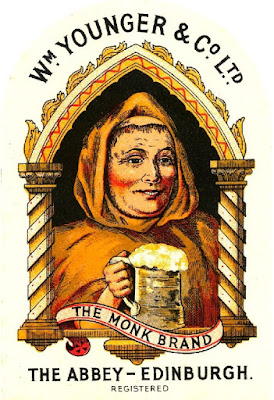Towards the end of the 19th century, UK brewers became a little obsessed with Lager. And the ways in which it differed from UK-brewed beer.
Some could see the advantages of a Lager-like beverage, but few were keen to put their money where their mouth was and build a proper bottom-fermenting brewery. Though, having seen what happened to most of those earlier pioneers who did invest in a Lager brewery, I can understand their reluctance. Ther ewere some spectacular bankruptcies.
"Dextrinous Beer.
ONE of the principal differences between English and Continental or lager beers, is the much smaller percentage of dextrine in the former. Independently of the system of rapid fermentation at comparatively high temperatures which is adopted in this country, and which produces a highly-attenuated and therefore strongly alcoholic beer, our systems of malting and mashing tend towards the production of highly saccharine and therefore readily fermentable worts, and the resulting beers possess a comparative thinness of flavour when the amount of malt that has been used in their production is taken into consideration. Lager beer brewers use malt which has been germinated to only a moderate extent, and by their methods of mashing they check and partially destroy the action of the diastase, so that the percentage of dextrine to maltose in their completed beers is, on the average, as three to one, whilst in English-brewed beers this ratio is, on the average, only from 1 to 1.5 to 1. As dextrine undoubtedly gives fullness of flavour to beer, lager beer is very much "fuller" and "rounder" to the palate than our English-brewed beer of the same original gravity. The "high" and "low" systems of fermentation have something to do with this, but in the main it is due to the lager beer brewer producing a very dextrinous wort. Our English system of mashing tends to convert much of the dextrine into maltose, and thus an easily attenuated wort is produced."
Holmes' Brewing Trade Gazette - Sunday 01 July 1883, page 12.
I doubt anyone today would call late 19th-century English beer thin. One of the reasons Lagers tasted fuller is that the rate of attenuation back then was shit. Few Lager managed better than 65% apparent attenuation. Considerably worse than most English beers.
Weird that they should be worried by the fact that UK malt and UK mashing techniques were in reality so much better than on the Continent.
It seems that the Free Mash Tun Act gave brewers a chance to recreate something Lager-like, without the need for all that fiddly decoction mashing.
"When malt was the only material allowed to be used in the mash-tun, it was very difficult for the English brewer to produce a highly dextrinous wort:- Malt in itself is so rich in diastase, that nearly all its starch is rapidly converted into maltose when it is mashed with water, under the conditions which usually obtain in an English brewery; but now that the use of raw grain is permitted, there is no reason why brewers should not increase tha dextrine ratio. By using mixed grists, carefully compounded, so as to contain only sufficient diastase to convert a portion of the starch into maltose, and using some unmalted grain which has been submitted to a process by which its starch is largely converted into dextrine, it seems possible and not very difficult for English brewers, even when still following their well-established system of brewing, to produce a highly dextrinous beer. Such a beer would commend itself to the palate of many beer drinkers en account of its excessive "fulness," and besides would possess the advantage of retaining a frothy head when poured out, no slight recommendation, for a beer drinker's eye has to be pleased as his palate. A moderately alcoholic beer, prepared and fermented according to the systems usually adopted in this country, but containing about equal proportions of maltose and dextrine, and of low original gravity, would probably meet the requirements of the modified taste of English beer drinkers, and would check the rapidly increasing demand for foreign-brewed lager beer."
Holmes' Brewing Trade Gazette - Sunday 01 July 1883, page 12.
Leaving just enough enzymes to partially convert the starch in the mash seems dead risky to me. You'd need to be very cofident of knowing the precise diastatic power of your malt. If you overestimated it, the result would be a shit wort. Underestimate it, and you'd just get a standard English wort.
It's worth pointing out that beer imports were minimal at the time.
17,850 barrels of beer were imported into the UK. Out of a total consumption of 30,341,199 barrels.* That's just 0.06%. So imports were scarcely on the point of driving UK brewers out of business. Though we can be pretty certain that almost all of those imports were Lager of some description. There was no point in importing top-fermenting beer.
* Brewers' Almanack 1928, pages 109 and 115.




























































































